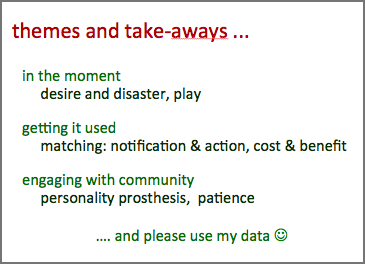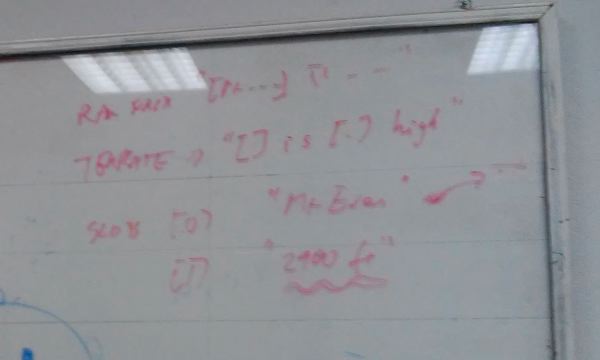Last week I visited Athens again to give keynote “Long-Term Engagement” at Usability And Accessibility Days 2014. The rest of the event was in Greek, so I got excused to wander across to see the exhibition of contemporary icons by Helena Krystalli in the adjoining room.
The talks included vignettes about Walking Wales, Tiree Tech Wave and other technology projects on Tiree, the InConcert musicology data project, and Talis software for learning analytics. the linking theme was the different time frames for engagement and key properties/heuristics at each level including ‘desire and disaster‘, matching cost–benefit, and ‘Micawber management’.
As well as the talk I got to see old friends in Athens, many of whom I’d not seen for five years since my last visit for the 2009 SIGCHI Greece event when I was talking about ‘Touching Technology‘. Despite the years it seemed like just yesterday when we’d last talked together.
Although there was some evidence of change (Angela who I stayed with now has two daughters instead of one), much was the same (George’s house is still waiting to get its central, hearing working).
However, when I was in the research office the day after the talk I decided that Athens definitely is in stasis when I am not there. We were sitting talking and I happened to look up at the board and saw writing there. It was a little obscure, and intriguing, but as I examined it I realised t was in fact my own handwriting, written there 5 years ago during a discussion in the same office.
To be fair there was some additional evidence of change beside Angela’s child; the new Acropolis Museum has opened, a wonderful building of glass and steel built to display the many treasures found by archaeologists, and most especially the whole of the upper floor laid out to recreate the frieze around the top of the Pantheon. There are some gaps, but much of the sculpture is either there, or, where the original is elsewhere, in plaster cast.
The plaster cast sections all say where they come from, except the vast majority simply say ‘BM’ … it took a few before this sunk in, the British Museum … the Elgin Marbles – too sore a point even to write the words in full. Indeed the whole museum is partly a statement to show just how much is in London not Athens, and also that Greece is now quite capable of preserving them.
It is a complex question undoubtedly much more would be missing, eroded or damaged if Elgin had not shipped them to Britain in the 19th century, and clearly not every work originating in a country should be returned … I imagine all the obelisks around Rome being sent back to Egypt! However, seeing the museum and vast proportion saying ‘BM’ brings home that this is not simply a small amount elsewhere, but a large proportion, and in many ways the ‘best bits’.
There is also something different about the iconic monuments of any nation: it is as if parts of the Tower of Pisa were in Germany or London Bridge in Arizona …
To take our minds off such heady matters Angela and her family took me swimming in a volcano. Christmas music playing in the background while bathing in water at 22° C.



